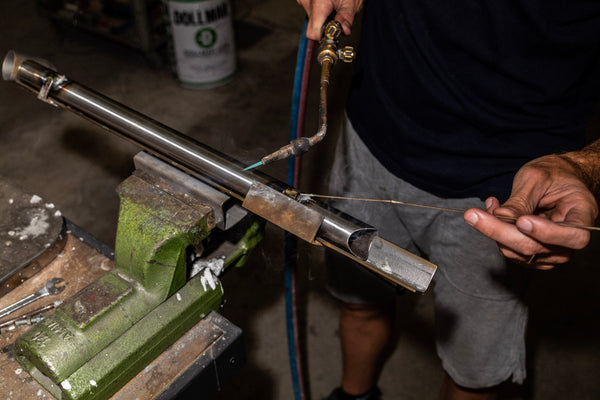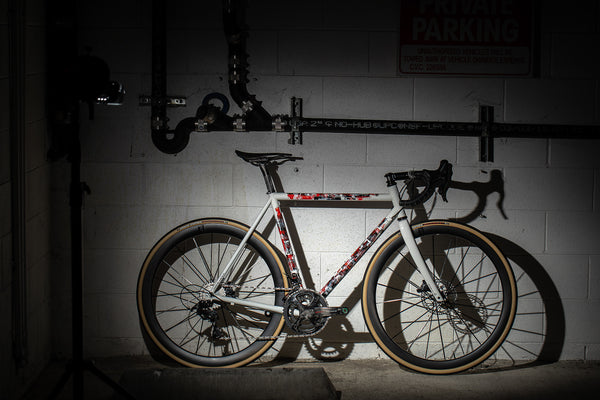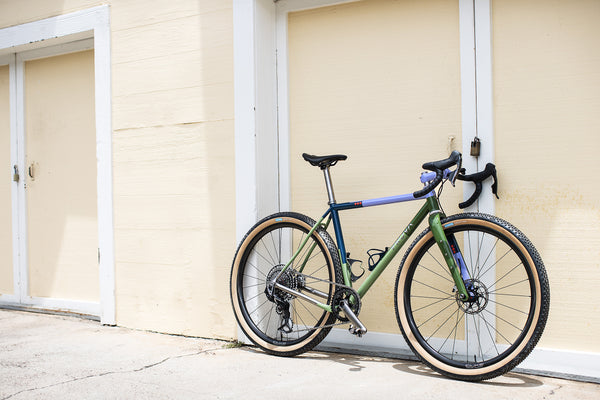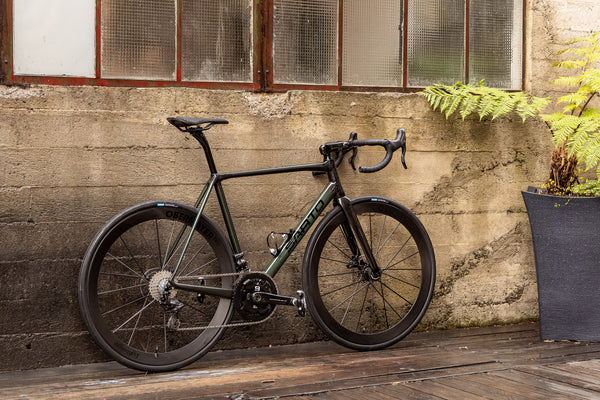
OK, so if you’ve done Part 1 of our cleat mounting process correctly, you’ve got a line on the inside of each foot and two sheets of 8.5 x 11” paper with tracings of your foot. Now let’s get into the challenging part.
Step 9: With the two foot drawings in hand, have a seat at a desk or comfortable table. Measure across the heel of each foot with a ruler or straight-edge and mark the exact middle of the heel of your foot.
Step 10: Take the straight-edge and run it in a line from your heel up to the center point of your second toe that you marked previously. Essentially, you’ll run the ruler the length of your foot along its mid-point.
Step 11: Using the mark that you made from the center of the ball of your foot, draw line that is exactly perpendicular to the first line that you’ve drawn. Now you should have a crosshairs with the crossing point of the two lines on the middle of the ball of your foot.
Step 12: Now’s where it might get a little tricky because we’re going to measure the drawing and transfer those measurements to the bottom of your shoe.
Measure from the heel on your drawing up to middle of crosshair (174-mm for my size 42-foot). Then deduct 2-mm off the number you measure so that you’ll take the center of the cleat slightly off the center of the bone you are locating it over.
Step 13: Measure from the inside ball of your foot to the center-point of the crosshairs (41mm on my size 42-foot) You’ll add 2-mm to this measurement because your shoe will stretch, allowing your foot to become wider when pressure is placed on it.
Step 14: Using your straight-edge, transfer the measurements you’ve made onto your shoe. For accuracy, you may need measure the width of the heel of your shoe and place marks on the center of the heel and at the inside ball of your foot.
Step 15: Once you’ve located the center of your heel and the center of the ball of the foot, measure out the numbers you took from your drawing.
Many cleats have a line or notch that indicates their center-point. Speedplay, for example, has a line, while Look & Shimano have bump on cleat to indicate the center point.
Step 16: Getting close now. Next, measure from the inside edge of the shoe, in a place on the shoe that is similar to where you made the initial black mark on your foot. You’ll measure to the middle of the ball of the foot using the number that you took from your drawing. Once you’ve centered the cleat on the center of the crosshairs you created on the bottom of your shoe, simply snug it down using the appropriate bolts.
Step 17: Now, to help locate the cleat side-to-side. You’ll want to measure from 1-cm off the centerline toward the outside of the shoe, straight up through to the middle of the shoe’s toe box. Try your best to make the cleat run right up the middle of the shoe in straight line. Most likely, you’ll need to experiment with this step to get your preferred release point.
Note: This step is not necessary for those using Speedplay pedals because they feature such a generous amount of float.
Well, did it work for you? Let us know if there are ways we can make our system easier or more clear.
Start your Build
Since 2006, we've been creating the world's finest dream bikes with our signature approach to custom builds and customer service.
Our Custom Program
AC Everywhere
You can find us just over Golden Gate Bridge in California's Marin County. Can’t come to us? We can bring the bike to you. We craft custom bikes for clients all across the U.S. and the world.
Contact us






Back to Journal